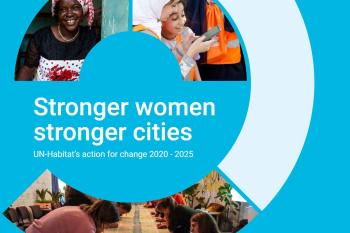
Read More
Stronger women stronger cities: UN-Habitat’s action for change 2020 – 2025
This publication presents a summary of UN-Habitat’s gender equality impact over the past five years, in line with the Beijing reporting cycle.

Namibia is a semi-arid and arid country situated between the Namib and the Kalahari Deserts in the south western part of Africa. It is among the least populated countries in the world, with a total land mass of 825,615 kms2 and a population of 2.4 million. Its economy is dominated by agriculture, fishery, mining and tourism. While Namibia is an upper middleincome country endowed with considerable natural resources, including minerals (copper, uranium, zinc, old, gemstones, etc.), fish and wildlife, distribution of resources is highly uneven. Namibia is undergoing a rapid and major transition from being a rural-based society to one increasingly concentrated in urban areas; over 50 per cent of the population is urbanised. While much of the urban population growth is due to internal densification, this transition is most visible in rapid urban expansion, especially in informal settlements that accommodate poor families in shacks on the outskirts of towns. Namibia’s urban areas now have about 230,000 informal structures, a number likely to double in the next 10 years, corresponding to an increase of around 2 million people, if this trend of unplanned informal settlement growth is not addressed urgently.
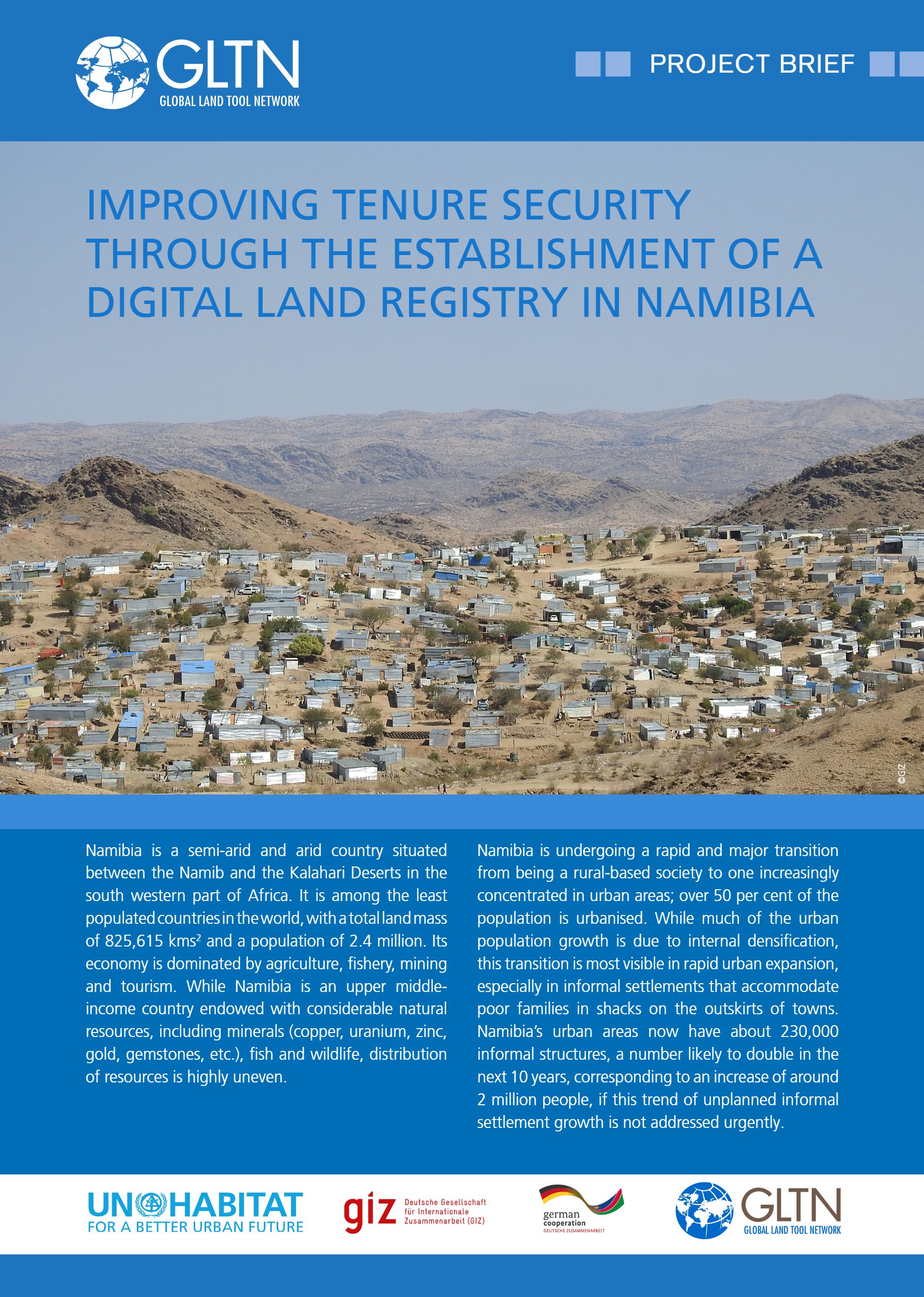
Companion poster - Land Information System for Registering Land Rights of the Urban Poor in Namibia
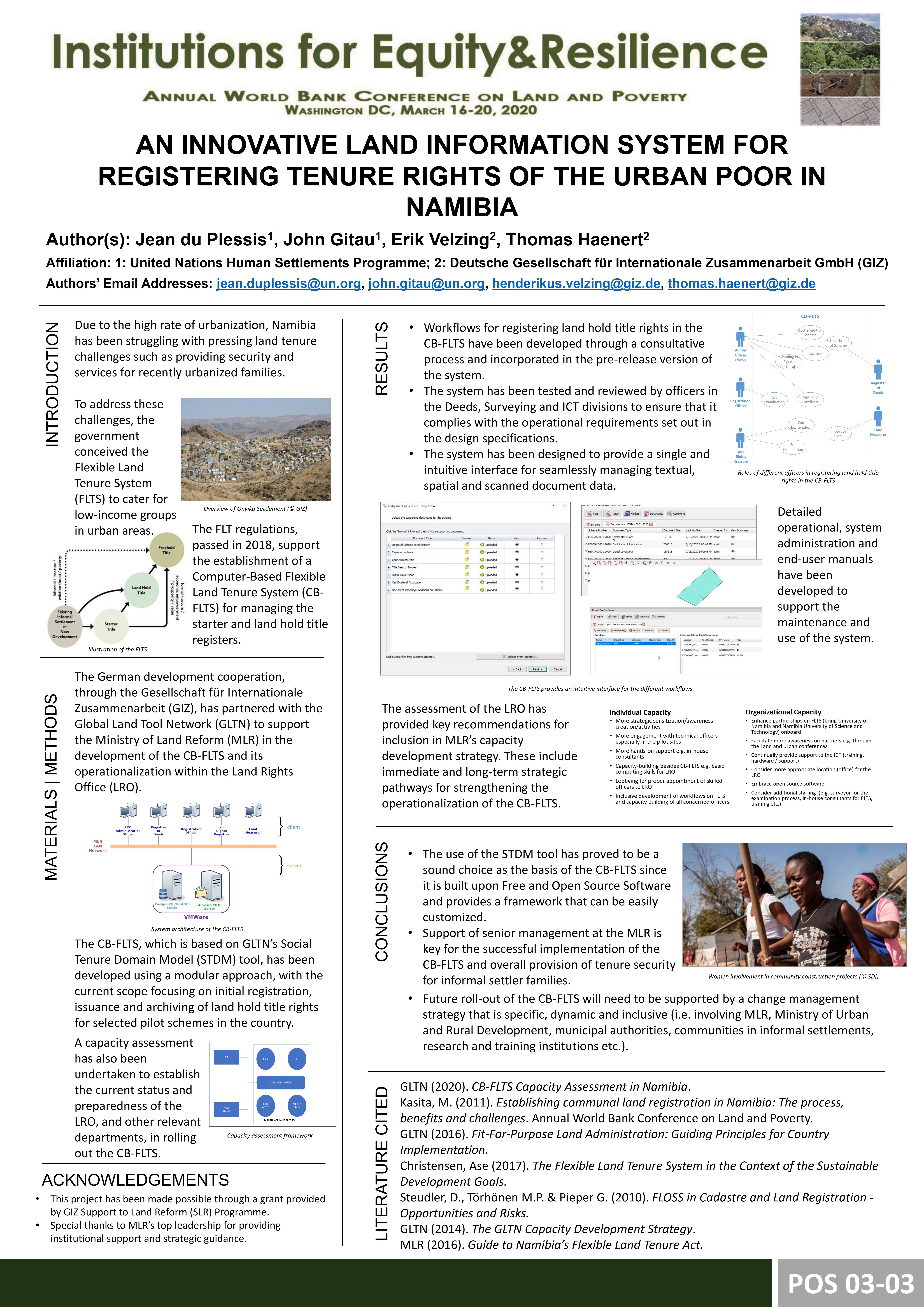

This publication presents a summary of UN-Habitat’s gender equality impact over the past five years, in line with the Beijing reporting cycle.
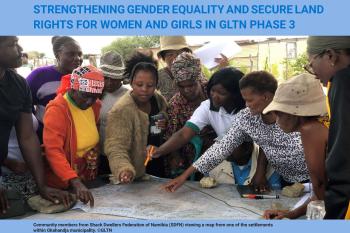
GLTN’s institutional commitment to gender equality and secure land rights for women and girls has been at the core of its work since inception in 2006.
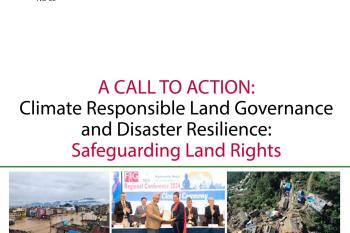
This FIG Nepal CALL TO ACTION on Climate Responsible Land Governance and Disaster Resilience underscores the imperative for land professionals to act in a climate responsive way.